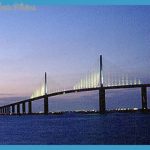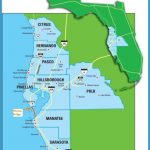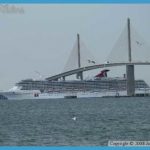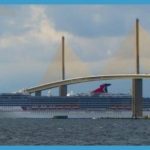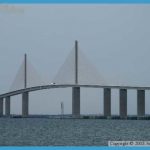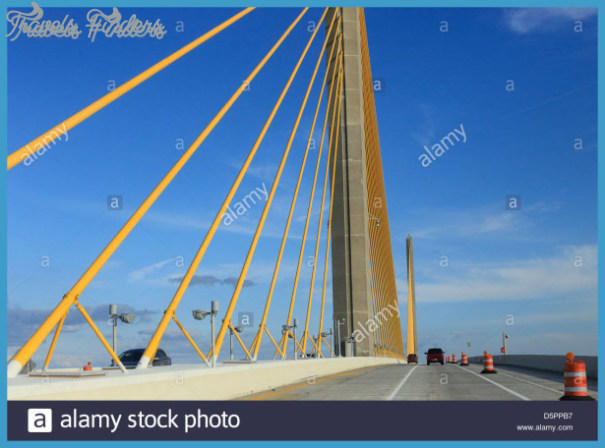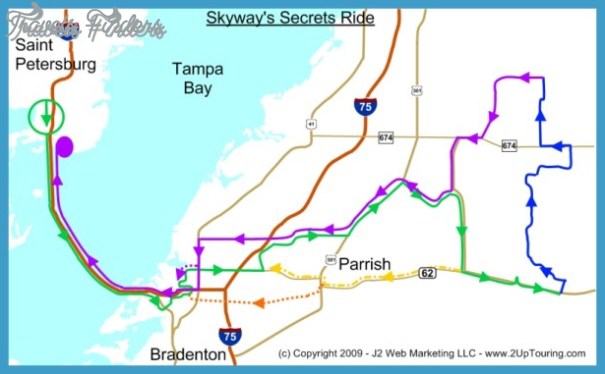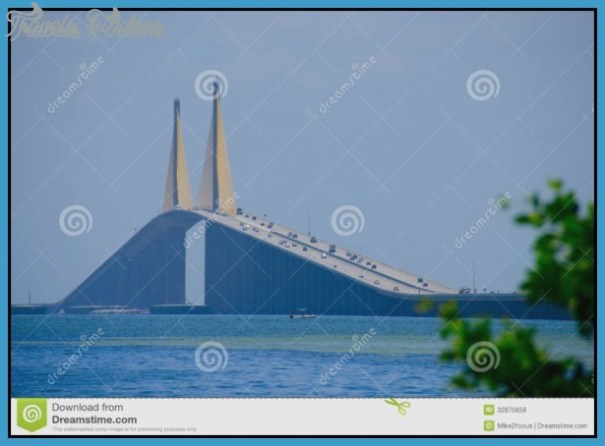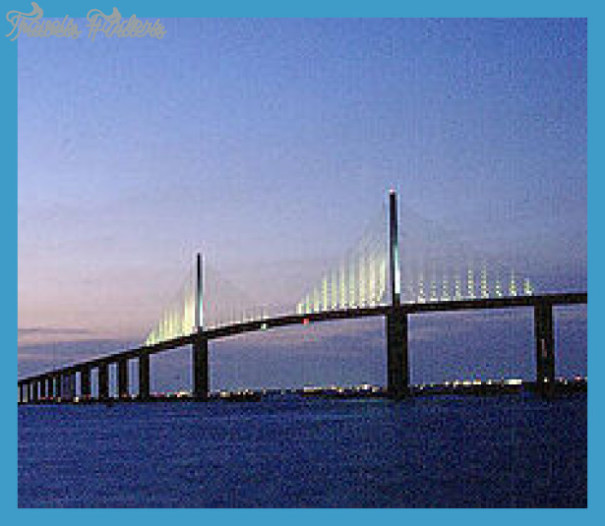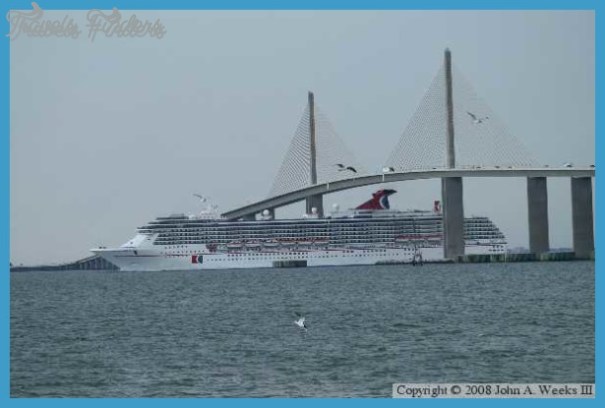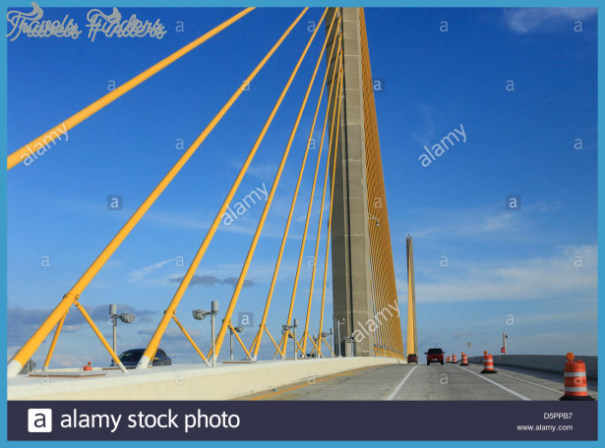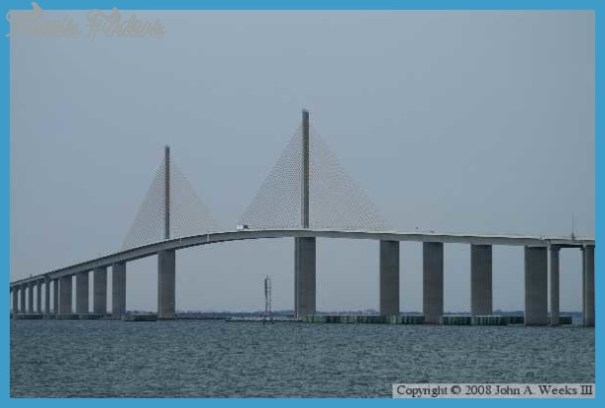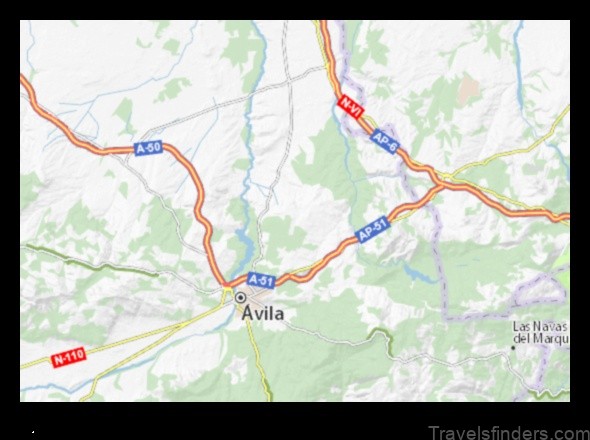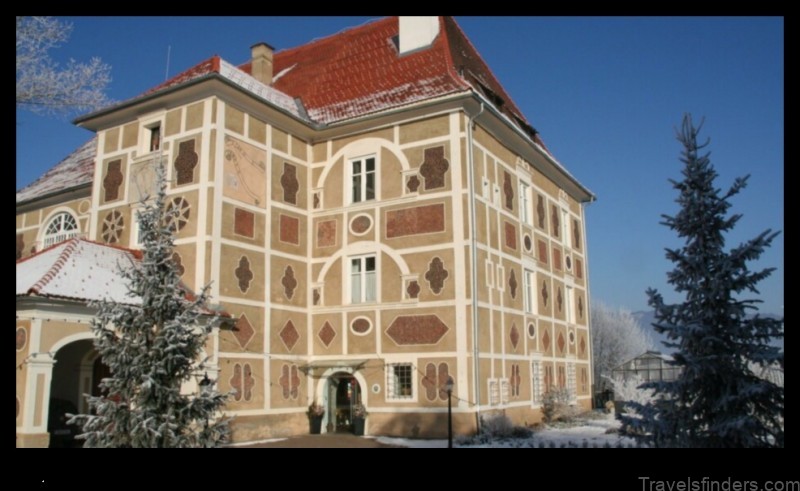BOB GRAHAM SUNSHINE SKYWAY BRIDGE MAP
To celebrate the Sunshine State, the stays are painted a brilliant yellow.
From a distance, the Bob Graham Sunshine Skyway Bridge looks like a futuristic schooner, sails aloft, skimming the surface of Tampa Bay. Others see the strings of a harp or an open fan in the triangular planes of stays that support the sleek bridge, which, however described, is a triumph of engineering design. Though not a new way of spanning the seas (cable-stayed bridges first gained popularity in post-World War II Germany), the Sunshine Skyway combines state-of-the-art engineering with a striking design, heralding the aesthetic possibilities of the cable-stayed bridge.
When completed in 1987, the bridge’s 1,200-foot (366-meter)-long main span was the world’s longest cable-stayed precast concrete span. In its entirety, including the side spans and approaches, the bridge is just over 4 miles long (6.6 kilometers). The highest portion of the roadway deck is constructed of 330 95-foot (29-meter)-wide precast concrete segments that are threaded with high-strength steel cables for the length of the bridge. This precast superstructure, in addition to being economical, stiffens the bridge, making it less vulnerable to wind forces. The cable masts are placed between, not outside, the twin roadways, opening unobstructed views of the emerald-green bay. From an esthetic standpoint [the Sunshine Skyway] may well rank as the most impressive piece of large-scale bridge design in this country in half a century.
BOB GRAHAM SUNSHINE SKYWAY BRIDGE MAP Photo Gallery
PAUL GOLDBERGER, THE NEW YORK TIMES, OCTOBER 16, 1988
The bridge came about after the freighter Summit Venture struck one of a pair of earlier bridges in 1980, demolishing it and killing thirty-five people. To deflect wayward ships from the skyway, concrete islands, or “dolphins,” protect the piers that surround the main shipping channel. Dual piers support the main span, and can withstand the impact of a 12-million-pound ship. Their elliptical shape is visually pleasing, and also reduces drag, a benefit in this hurricane-prone area.
Renamed in 2005 in honor of Bob Graham, a former Florida governor and U.S. senator, the skyway introduced long-span cable-stayed bridges to the United States. Its innovations have been recognized with numerous awards, including the 1988 Presidential Award for Design Excellence. Linking St. Petersburg and Clearwater in the north with Bradenton and Sarasota in the south, the bridge fused the Tampa Bay region into a whole, expanding its economy and, understandably, its civic pride.
The twenty-one steel cables that carry the roadway splay out from two slender central pylons, which soar 242 feet (74 meters) above the deck. The stays are attached to every other deck segment, with each cable supporting two segments on either side of the pylon. Each stay consists of thirty-eight to eighty-two seven-wire strands that are encased in steel pipes, which are painted yellow to increase the bridge’s visual impact. The first vehicles to cross on opening day, April 30, 1987, approach the span’s single plane of stays. Its minimalist form belies its strengththe bridge can withstand wind gusts up to 240 miles per hour, stronger than a Category 5 hurricane.
Bridges along all three multispan routes are painted a soft white to harmonize with the green Seto Inland Sea, and in multiple zinc-rich layers to ward off the corrosive effects of the salt air.




